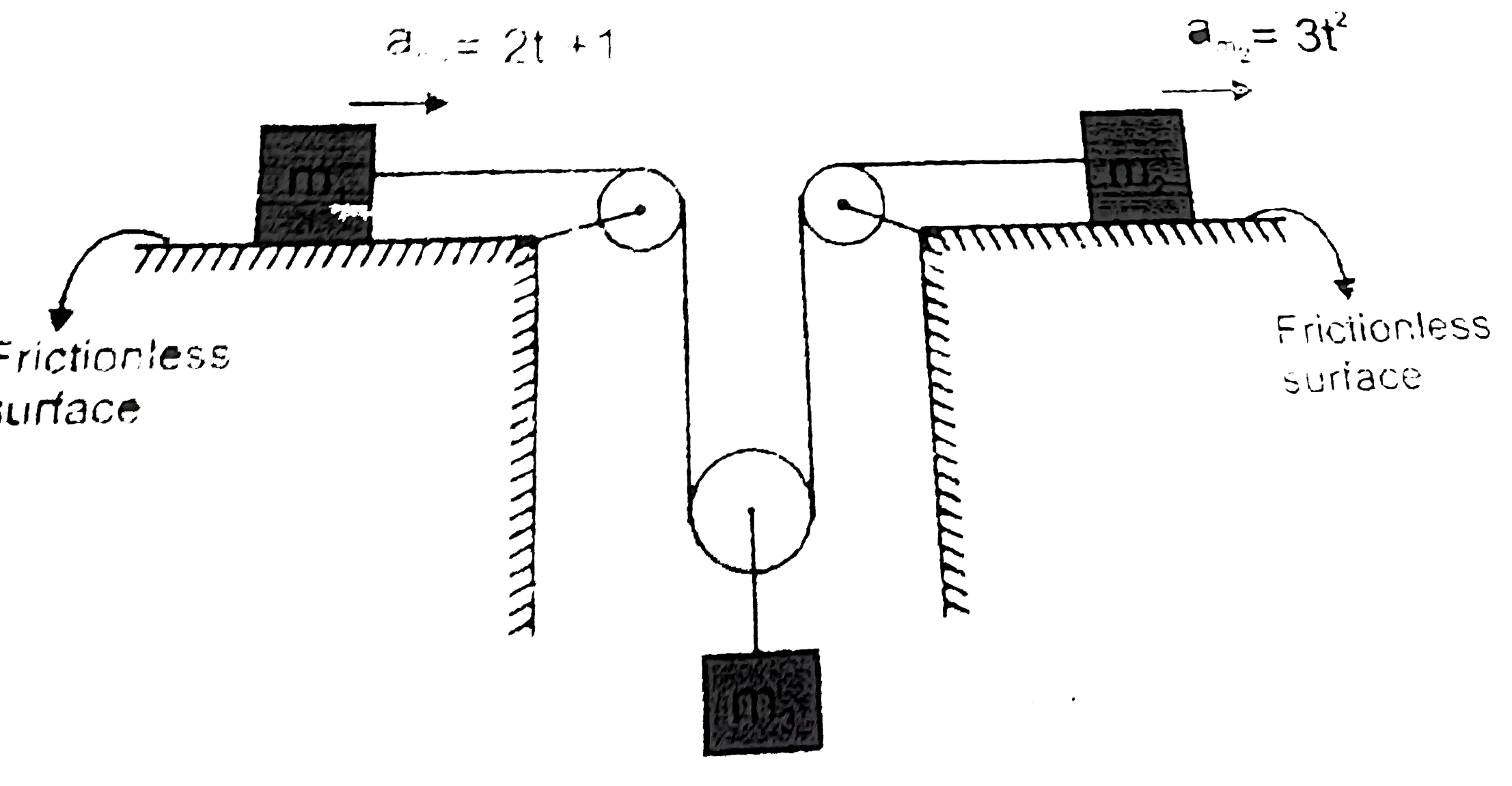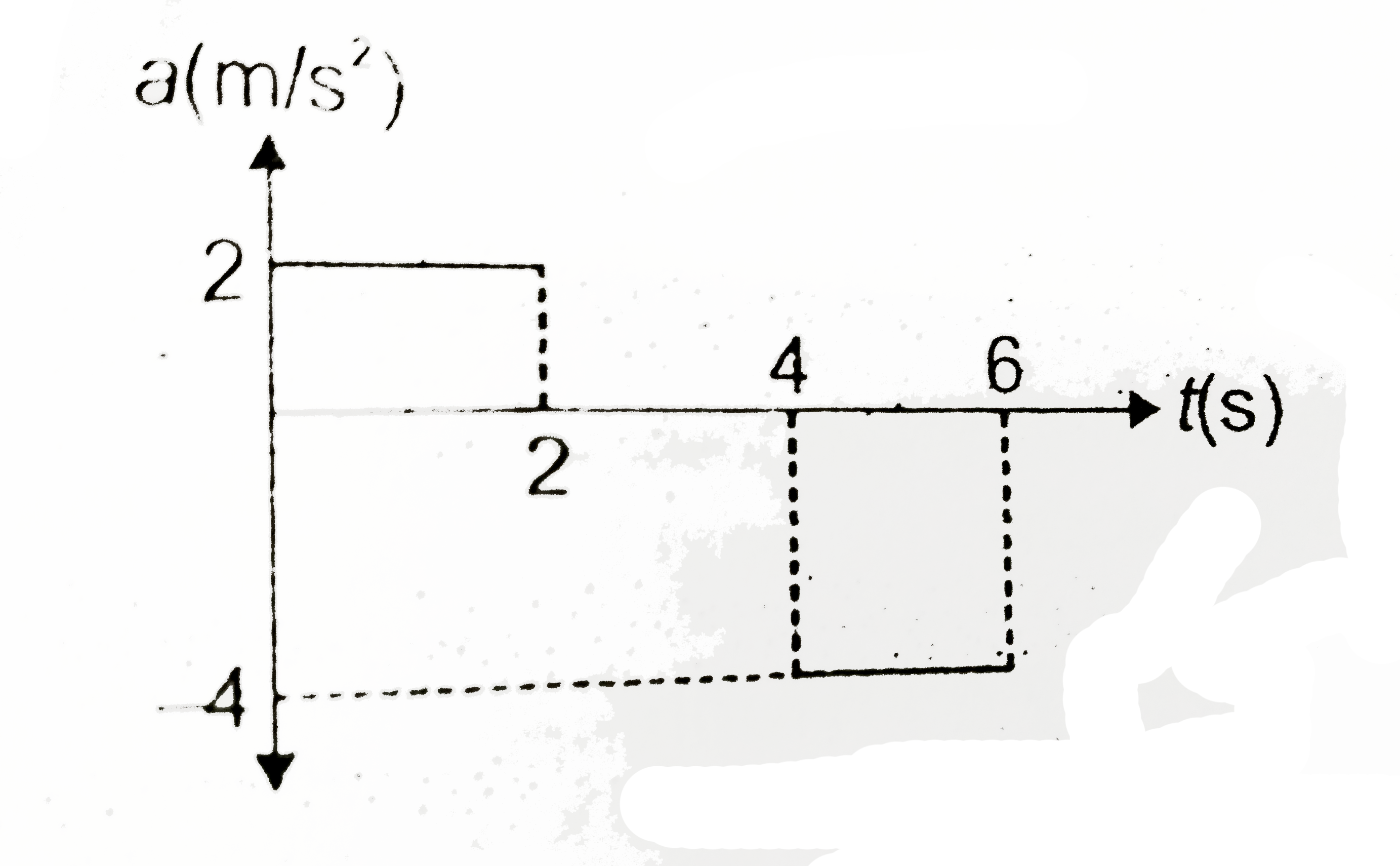A particle starts from rest with a time varying acceleration a=(2t−4). Here t is in second and a in m/s2
Particle comes to rest after a time t=………… second
1
4
3
2
The correct Answer is:B
To solve the problem step by step, we will start with the given acceleration and integrate it to find the velocity, and then find the time when the particle comes to rest.
Step 1: Write down the given acceleration
The acceleration of the particle is given by:
a(t)=2t−4
Step 2: Relate acceleration to velocity
We know that acceleration is the derivative of velocity with respect to time:
a=dvdt
This means we can express the change in velocity in terms of acceleration:
dv=adt
Step 3: Substitute the expression for acceleration
Substituting the expression for acceleration into the equation:
dv=(2t−4)dt
Step 4: Integrate both sides
Now we will integrate both sides. The left side will be integrated with respect to v and the right side with respect to t:
∫dv=∫(2t−4)dt
The left side integrates to:
v=∫(2t−4)dt=t2−4t+C
where C is the constant of integration.
Step 5: Determine the constant of integration
Since the particle starts from rest, we know that when t=0, v=0:
0=(0)2−4(0)+C⟹C=0
Thus, the velocity function simplifies to:
v(t)=t2−4t
Step 6: Find when the particle comes to rest
The particle comes to rest when its velocity is zero:
v(t)=0⟹t2−4t=0
Factoring the equation gives:
t(t−4)=0
This results in two solutions:
1. t=0 (the initial time)
2. t=4 seconds
Conclusion
The particle comes to rest after t=4 seconds.
The acceleration of the particle is given by:
a(t)=2t−4
We know that acceleration is the derivative of velocity with respect to time:
a=dvdt
This means we can express the change in velocity in terms of acceleration:
dv=adt
Substituting the expression for acceleration into the equation:
dv=(2t−4)dt
Now we will integrate both sides. The left side will be integrated with respect to v and the right side with respect to t:
∫dv=∫(2t−4)dt
v=∫(2t−4)dt=t2−4t+C
where C is the constant of integration.
Since the particle starts from rest, we know that when t=0, v=0:
0=(0)2−4(0)+C⟹C=0
Thus, the velocity function simplifies to:
v(t)=t2−4t
The particle comes to rest when its velocity is zero:
v(t)=0⟹t2−4t=0
Factoring the equation gives:
t(t−4)=0
This results in two solutions:
1. t=0 (the initial time)
2. t=4 seconds
The particle comes to rest after t=4 seconds.
Topper's Solved these Questions
- BOOK - DC PANDEY ENGLISHCHAPTER - KINEMATICS 1EXERCISE - MATCH THE COLUMN10videos
KINEMATICS 1
- BOOK - DC PANDEY ENGLISHCHAPTER - KINEMATICS 1EXERCISE - INTEGER_TYPE15videos
KINEMATICS 1
- BOOK - DC PANDEY ENGLISHCHAPTER - KINEMATICS 1EXERCISE - MCQ_TYPE27videos
KINEMATICS 1
- BOOK - DC PANDEY ENGLISHCHAPTER - KINEMATICSEXERCISE - INTEGER_TYPE10videos
KINEMATICS
- BOOK - DC PANDEY ENGLISHCHAPTER - LAWS OF MOTIONEXERCISE - Medical entrances gallery39videos
LAWS OF MOTION
Similar Questions
A particle starts from rest with a time varying acceleration a=(2t−4). Here t is in second and a in m/s2
The velocity time graph of the particle isView SolutionA particle starts from rest with a time varying acceleration a=(2t−4). Here t is in second and a in m/s2
Maximum velocity of particle in negative direction is at t=…………… secondView SolutionA particle start from rest, with uniform acceleration at time t, choose the correct option
View SolutionBlocks m1 and m2 starts from rest and move to right with accelerations as shown. If t is in second then the time when block m3 again come to rest from t=0 is (pulley and strings are ideal) :
 .View Solution
.View SolutionA particle starts from rest. Its acceleration is varying with time as shown in the figure. When the particle comes to rest, its distance from its starting point is
 View Solution
View SolutionA particle starts from rest, moving in a straight line with a time varying acceleration (inm/s2):a=30−152√t, where time is in seconds . The displacement of the particle in 4 seconds is .
View SolutionA particle starts from rest and moves with an acceleration of a={2+|t−2|}m/s2 The velocity of the particle at t=4 sec is
View SolutionA particle starts from rest and moves with an acceleration of a={2+|t−2|}m/s2 The velocity of the particle at t=4 sec is
View SolutionA particla starting from rest undergoes acceleration given by a=|t−2| m/s2 where t is time in sec. Find velocity of particle after 4 sec. is :-
View SolutionA particle starts from rest with a constant acceleration. At a time t second, the speed is found to be 100 m/s and one second later the speed becomes 150 m/s. Find a. the acceleration and b. the distance travelled during the (t+1)th second.
View Solution

